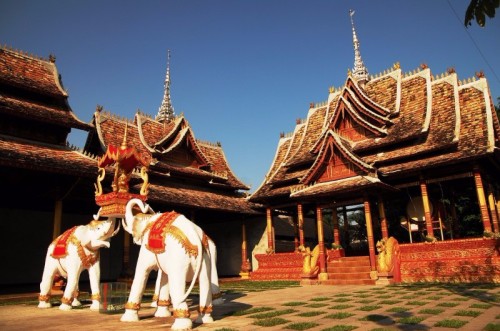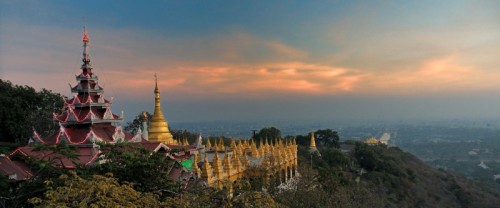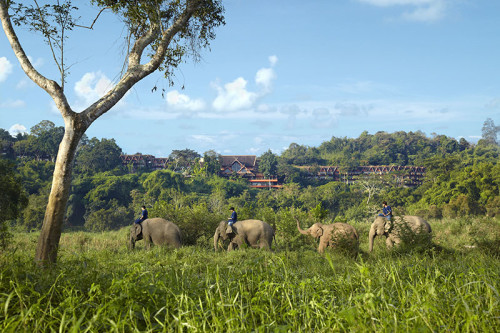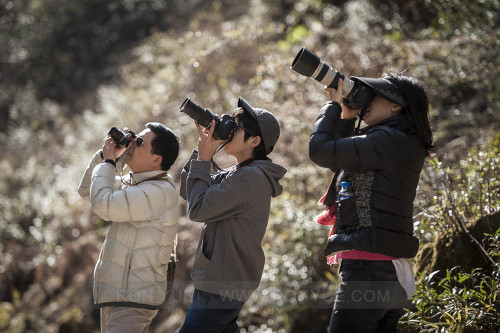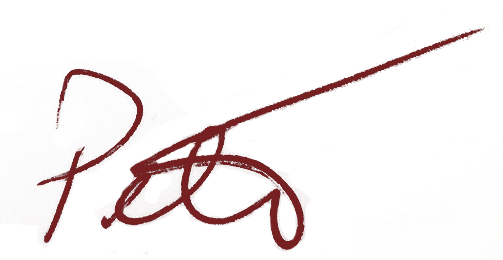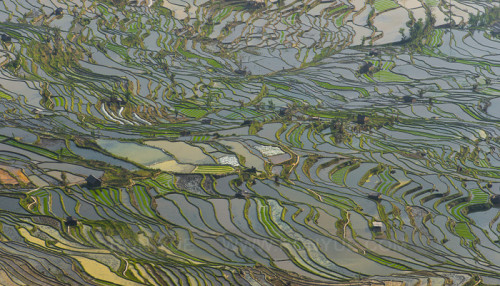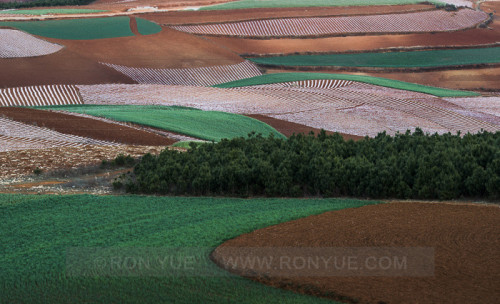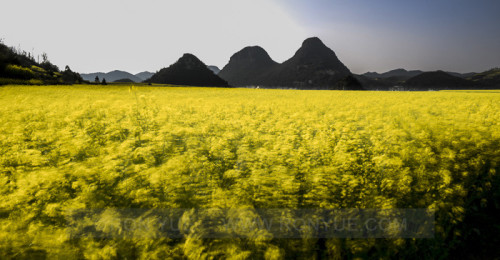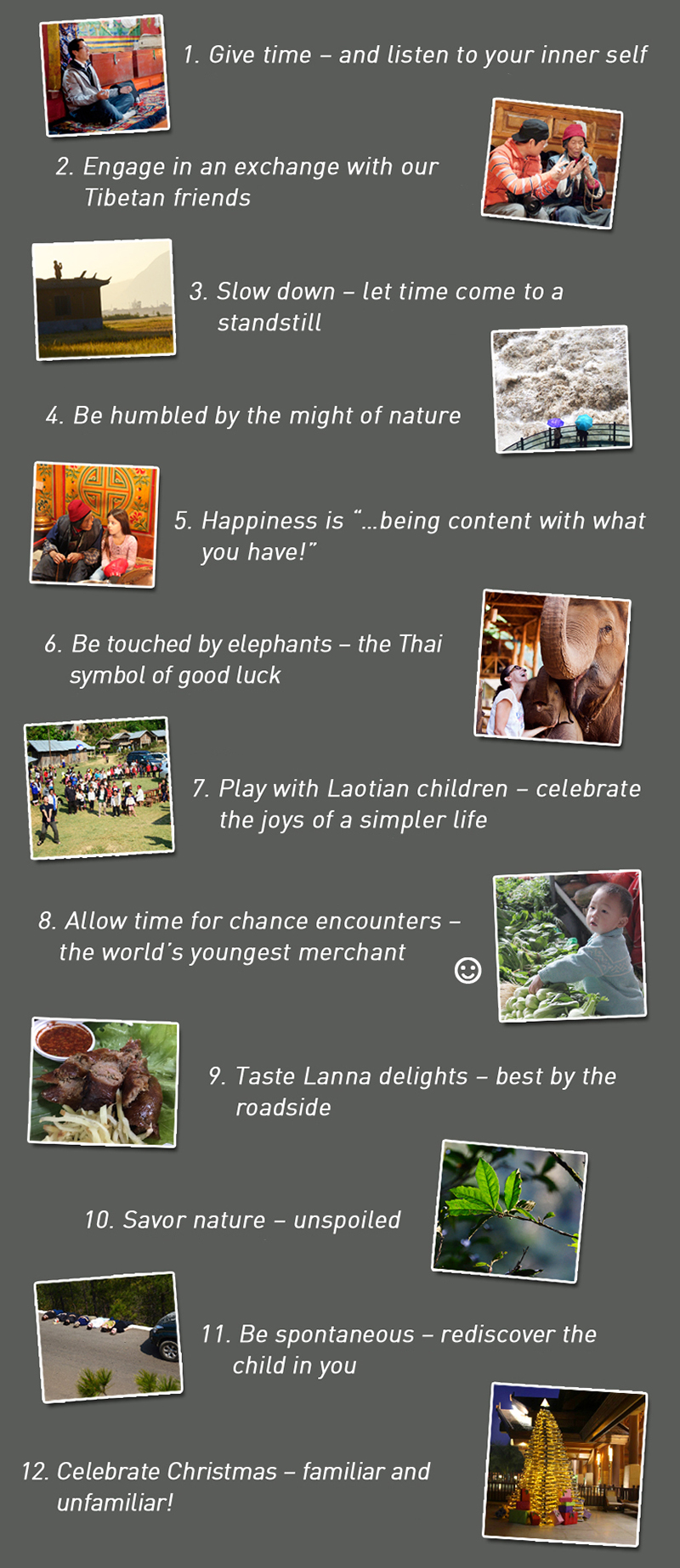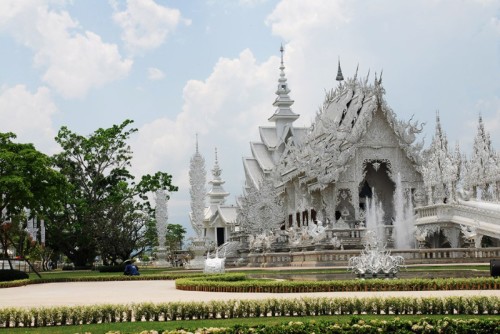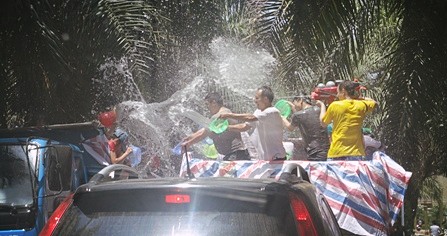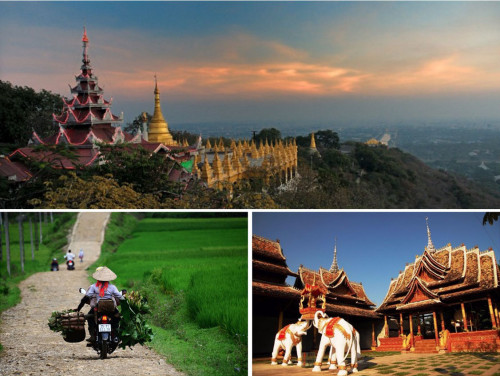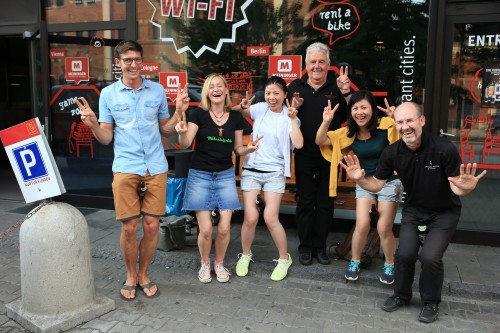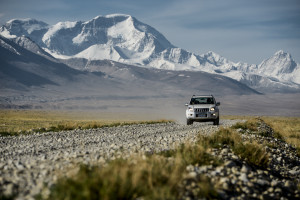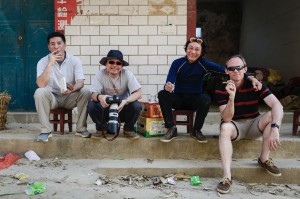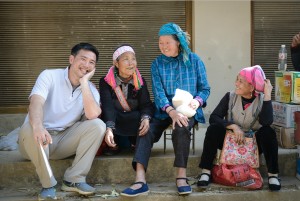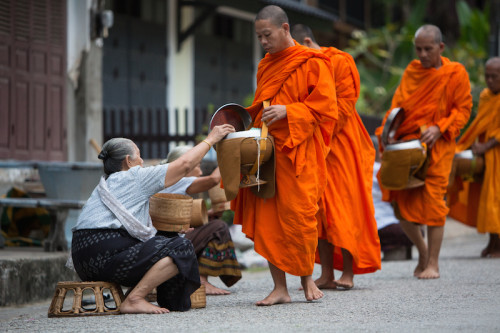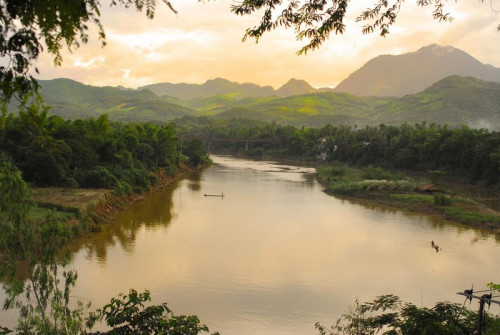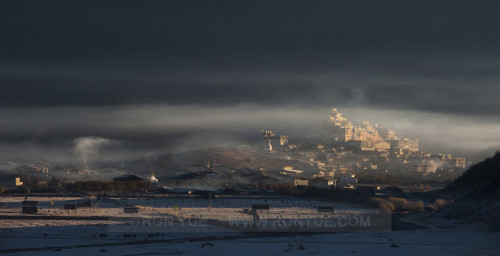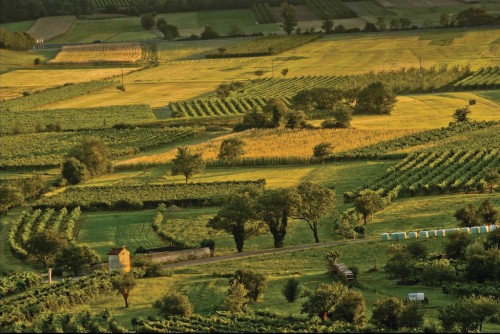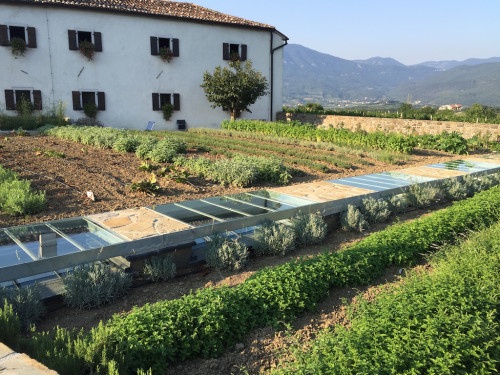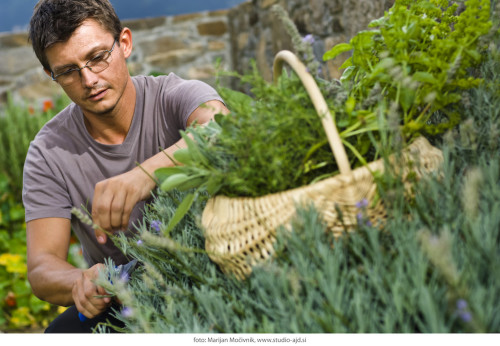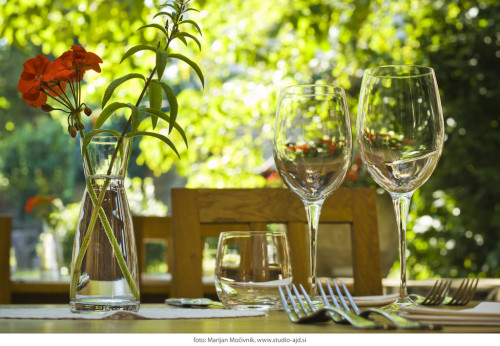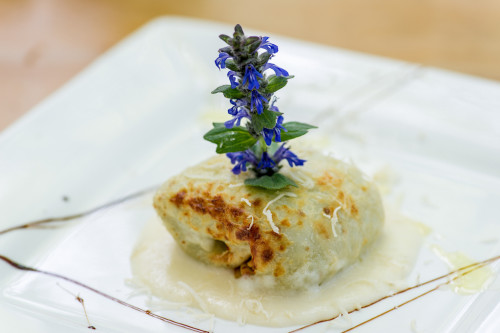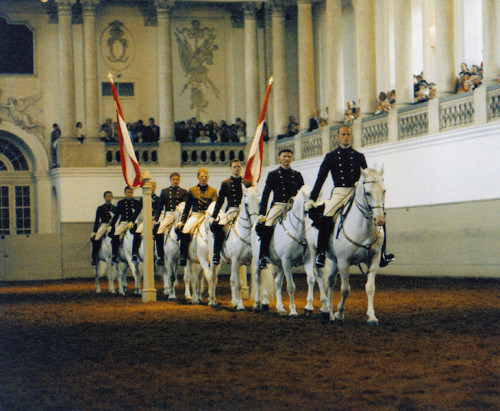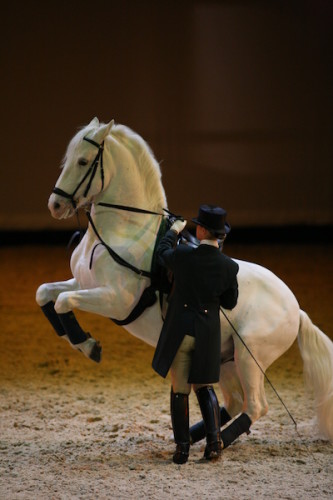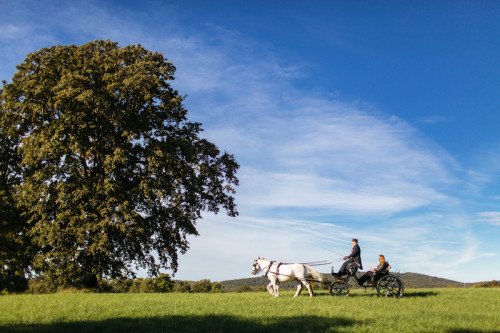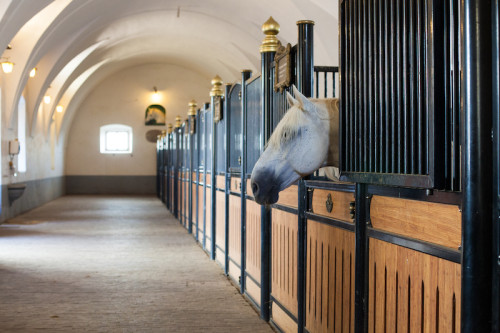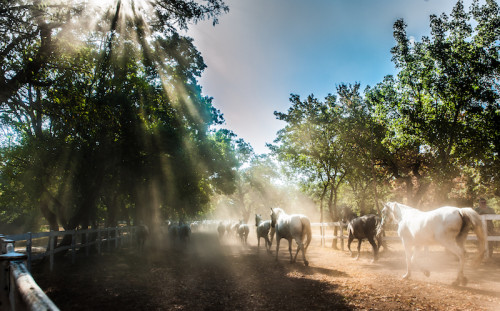Category: Uncategorized
Posted on 26 Oct, 2016
I thought I was pretty familiar with Europe, and that I knew a thing or two about European culture and life. But when I say “Europe”, I mean the UK, France, Switzerland, Italy and so on – the countries that attract visitors from all over the world to spend their holidays there. When I set out on our June research trip, little did I realize that I was about to discover another understanding of the Continent.
One of the stops on our research trip was Slovenia. Before the trip I had only the haziest of ideas as to what Slovenia would be like. All I knew was that it had been communist until about twenty years ago, and so I imagined it to be a sombre place, its people dressed drably, its buildings colourless. Yet my experience of the Slovenian capital, Ljubljana, turned these expectations completely on their head.
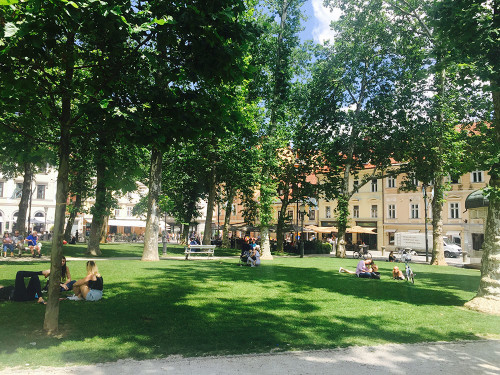 One sunny, 34C Tuesday morning, the sunlight shining through the leaves, we drove into the city. I couldn’t stop looking around me, comparing what I saw before me to the mental picture I had conjured up before our trip. This was no grey, drab country! I had to laugh at my own ignorance. As we approached the city centre, the roadside was plastered with adverts of all kinds of cultural events and activities; classical music, pop concerts, dance, theatre, I even saw a poster for Beijing opera, which gave me a moment of disorientation. After parking the car beside Republic Square, a popular spot for concerts and a gathering place for local people, we walked around the square. The scene that greeted our eyes was one of unselfconscious relaxation: people lay back on the lush green grass, reading, talking, drinking red wine or peacefully soaking up the sun. It looked like a still from a slow-motion film, so complete was the air of leisure, like a remake of La Dolce Vita.
One sunny, 34C Tuesday morning, the sunlight shining through the leaves, we drove into the city. I couldn’t stop looking around me, comparing what I saw before me to the mental picture I had conjured up before our trip. This was no grey, drab country! I had to laugh at my own ignorance. As we approached the city centre, the roadside was plastered with adverts of all kinds of cultural events and activities; classical music, pop concerts, dance, theatre, I even saw a poster for Beijing opera, which gave me a moment of disorientation. After parking the car beside Republic Square, a popular spot for concerts and a gathering place for local people, we walked around the square. The scene that greeted our eyes was one of unselfconscious relaxation: people lay back on the lush green grass, reading, talking, drinking red wine or peacefully soaking up the sun. It looked like a still from a slow-motion film, so complete was the air of leisure, like a remake of La Dolce Vita.
When dinnertime arrived, we accepted the invitation of friends to a restaurant in the hills, and took in the view out over nighttime Ljubljana. During the meal, the sound of distant music floated up from below. Our friends told us that there was an open-air concert being held in Republic Square, and I wished that I could hurry back down into the city to enjoy the summer evening programme.
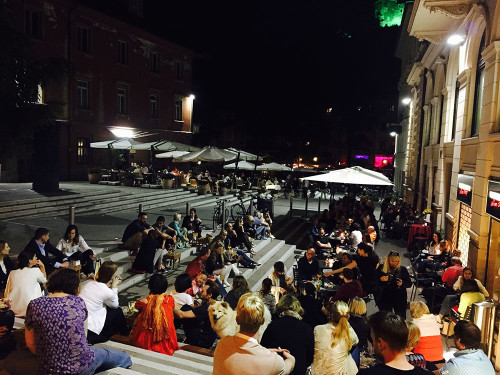 Without realizing it, the sounds of the concert gradually disappeared as our meal drew to its end. When I looked at the time it was already 11pm, and I started to worry that the streets would be deserted by the time we returned to the spot where we had left the car many hours earlier. After all, when one is in a strange place there are so many uncertainties; would it be safe? I never thought that the scene on the streets would completely surpass my expectations. Restaurants were just as full as they had been earlier in the evening, and – their insides full to bursting – happy drinkers simply spilled out onto the steps in front of each bar!
Without realizing it, the sounds of the concert gradually disappeared as our meal drew to its end. When I looked at the time it was already 11pm, and I started to worry that the streets would be deserted by the time we returned to the spot where we had left the car many hours earlier. After all, when one is in a strange place there are so many uncertainties; would it be safe? I never thought that the scene on the streets would completely surpass my expectations. Restaurants were just as full as they had been earlier in the evening, and – their insides full to bursting – happy drinkers simply spilled out onto the steps in front of each bar!
Centuries ago, the earth was thought to be flat, and people believed that if you walked to the end of the earth, you would simply fall off. And yet, as people gradually moved across the surface of the globe, eventually people discovered that our planet is a sphere. With every journey, as I gradually discover new places, I’m continually made to feel that the world is bigger than I could have imagined; a big and a beautiful place indeed.
Posted on 5 Oct, 2016
Another three months have passed…it is hard to believe! We’ve been busy as beavers writing about our adventures, hosting journeys and developing new itineraries in Europe and Asia. Curious what we’ve been up to? Here is our quarterly round-up of happenings and travel inspirations…
Looking back…
Over the summer, we published some fun reading on our Detours blog
 What a Day?! – Here is a story about a very special day on my most recent research trip in Europe
What a Day?! – Here is a story about a very special day on my most recent research trip in Europe
– – – – – – – – – – – – – – – – – – – – – – – – – – – – – –
Jo has written a story about traveling from Luang Prabang in Lao to Lhasa in Tibet…a route that lies at the heart of our new, 2017 “Lands of Silk and Snow” journey (see below).
– – – – – – – – – – – – – – – – – – – – – – – – – – – – – –
And Mareen published a story about a day in her life working at On the Road.
– – – – – – – – – – – – – – – – – – – – – – – – – – – – – –
We take our work seriously, but we’re not serious all the time. Here is what we do when, we pray, our clients aren’t watching us.
Looking forward…
In September, we announced two entirely new journeys for 2017.
From Lao to Tibet
First out of the gate will be “Lands of Silk and Snow: From Luang Prabang to Lhasa”, our entirely new journey to Tibet. Imagine driving from the lush rain forests of Lao to the stupendous mountains of Tibet, from a culture inspired by one form of Buddhism to that inspired by another. For this magical journey you need 16 days, but you can shorten it to 12 days if you skip the Lao portion.
On the other hand, if you want to make it into the journey of a lifetime, then add Roads on the Roof of the World at the end to drive all the way to the Mt. Everest Base Camp. Driving tours don’t get any better than this in Asia!
Austrian Hungarian Lands: Vienna, the Adriatic, the Alps and Prague
And then comes a milestone for us. After several private group journeys in Europe, here we are with our first scheduled European journey you can join in spring or autumn 2017.
If you would like to
-
spoil yourself with beautiful hotels,
-
eat fine meals (not always Michelin star, but the best these regions have to offer the way “mom used to cook it”),
-
drive on some of the world most beautiful roads and
-
immerse yourself in the landscapes and cultures of Austria, Slovenia, Croatia and the Czech Republic, there is no better journey in the world.
Travel Inspirations for Christmas 2016 through Easter 2017
A Christmas Treat: From Shangri-La to the Lanna Kingdom
-
Our flagship Asian journey from the edge of Tibet to Chiang Mai in northern Thailand is even better at Christmas and New Year.
-
It is beautiful as a family adventure, too, a journey that will be unforgettable for you and your children
-
December 22 2016
A Burmese Journey: From the Golden Triangle to the Bay of Bengal
-
Drive on back roads through this country that was frozen in time but is now undergoing rapid change…
-
February 12 and November 4 2017
Yunnan through a Lens: Red Earth and Fields of Gold
-
Our most beautiful Yunnan photography journey with Ron Yue
-
Only one single time each year, when Yunnan’s most photogenic regions are at their best at the same time:
– the Red Earth of Dong Chuan stands out in stark contrast to the surrounding hills and fields
– the Rapeseed Fields of Luoping shine in bright yellow
– the “Mirrors of God” Rice Terraces of Yuanyang sparkle and reflect the sky beautifully
-
To get you in the mood, Ron has written an article, “Earth and Gold“, about how he feels about this journey and why he loves it so much on our Detours blog.
-
March 3, 2017
Elephants and Parasols: From Vientiane to Chiang Mai
-
A discovery of beautiful landscapes, natural splendor and local culture.
-
Laos is an ideal destination if you are after:
– a breathtaking getaway,
– being close to nature,
– enjoying a relaxing, peaceful journey and
– meeting friendly people everywhere you turn.
-
You’ll encounter the delectable Lao cuisine: a little bit French, a lot of Southeast Asian, and perfect washed down with a bottle of Beer Lao.
- April 1st and April 14 2017
Family Adventures: Travel Photography in Yunnan
-
A journey that combines
– all the fun elements of our kids-friendly journeys … and …
– photography with Ron Yue as the coach.
-
The idea? A chance you and your children to join in a shared and meaningful activity!
-
Photography has the power to
– inspire anyone, young or old, to see beauty where others see drabness;
– has the power to help simplify one’s life;
– the power to let us recognize that even in this world of insta-anything – Instagram, instant noodles, instant gratification – patience has value.
-
“Wow! ‘The best family holiday ever” was the travelers’ refrain of those who joined over Easter this year.
- April 1st and April 14 2017
We hope these stories and journeys make you want to travel, see the world and spend good time together with friends and family!
Posted on 30 Sep, 2016
We take our work seriously, but we’re not serious all the time. Here is what we do when, we pray, our clients aren’t watching us.
We hope you will come and join us on a journey and, most importantly, have a great time with us!
Posted on 26 Sep, 2016
There aren’t many places in the world that present the traveler with such varied landscapes as southern Yunnan. From fields of rich red earth, to swaths of golden rapeseed, and glistening tiers of water-filled rice terraces etched into hillsides, it is a distinct experience to photograph these agricultural marvels for beginners and seasoned photographers alike.
The array of intense colours – red, brown, green, and white – at Dongchuan creates interesting patterns across the land that will challenge the photographer to construct an aesthetically balanced image. At Luoping, the vivid yellow flowers contrast sharply with the darker karst hills that intermingle with the fields. We will get amongst the rapeseed and explore working with depth of field and how to find and create order in a photographic environment where many different elements vie for attention. At Yuanyang, we will photograph the expansive rice terraces from a number of different locations, learning to isolate interesting sections and move beyond generic shots as well as observing the changing light conditions at sunset and dawn and their effects upon the landscape, as the sunlight creates fleeting and unrepeatable moments.
The trip, of course, wouldn’t be complete without fascinating roads to explore. The drive from Dongchuan is dramatic, climbing high along a fantastic valley with views to match, and the way out from Luoping follows meandering roads through bucolic countryside where you may be tempted to stop and soak it all in. By the time you roll back into Kunming, you will have experienced an incredible agricultural region with a complement of images to match, as well as new photographic capabilities that you will be able to take on your next journey, wherever that may be.
Posted on 23 Sep, 2016
For many of us, the end of the year is a time for taking time off to reflect upon the year past and the year to come. For some of us, it is the time to celebrate Christmas and time for giving. Giving often means the “things”. But we believe the memories of meaningful experiences last longer…
On the way from Shangri-La to Chiang Mai in Thailand, during 12 days, here are 12 gift ideas :
Join the “gift-to-yourself-and-your-family” journey: Over Christmas and New Year!
From Shangri-La to the Lanna Kingdom – December 22, 2016
-
An unforgettable way to close out 2016 and start the new year!
-
Click here for more info
-
In a nutshell
-
What?
-
Travel from Shangri-La in Yunnan via Nothern Lao to Chiang Mai in Thailand
-
Luxury, Comfort and Adventure all in one
-
Christmas in wintry Shangri-La
-
New Year in subtropical Thailand
-
How long? 8 or 12 days
-
-
We look forward to welcoming you on what will be one of the most memorable journeys of your life!
Posted on 6 Sep, 2016
We hope you had enjoyable summer months. For us, July and August were incredibly busy, not so much because of journeys, but because preparations for 2017 are in full swing! Here’s what we’ve been up to and what you can expect to come.
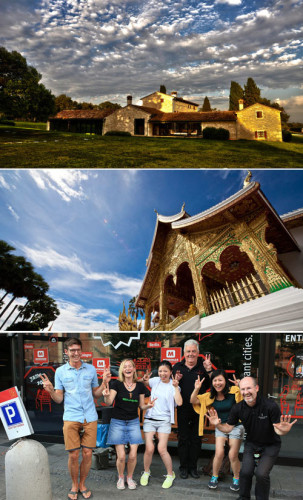 Looking back…
Looking back…
Over the summer, we published some fun reading on our Detours blog:
What a Day?! – Here is a story about a very special day on my most recent research trip in Europe
· Part 1: A holiday? Not exactly…
· Part 2: Impatient to be free…
· Part 3: I know one when I see one…
Jo has written a story about traveling from Luang Prabang in Lao to Lhasa in Tibet…a route that lies at the heart of our new, 2017 “Lands of Silk and Snow” journey (see below).
And Mareen published a story about a day in her life working at On the Road.
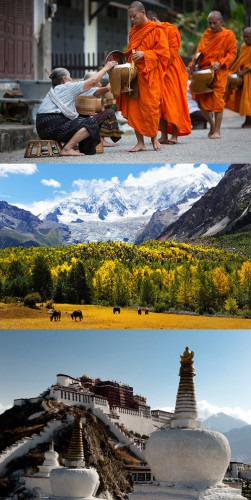 Looking forward…
Looking forward…
In September, we will be announcing two entirely new journeys for 2017.
From Lao to Tibet…
First out of the gate will be “Lands of Silk and Snow: From Luang Prabang to Lhasa”, our entirely new journey to Tibet. Imagine driving from the lush rain forests of Lao to the stupendous mountains of Tibet, from a culture inspired by one form of Buddhism to that inspired by another. For this magical journey you need 16 days, but you can shorten it to 12 days if you skip the Lao portion.
On the other hand, if you want to make it into the journey of a lifetime, then add Roads on the Roof of the World at the end to drive all the way to the Mt. Everest Base Camp. Driving tours don’t get any better than this in Asia!
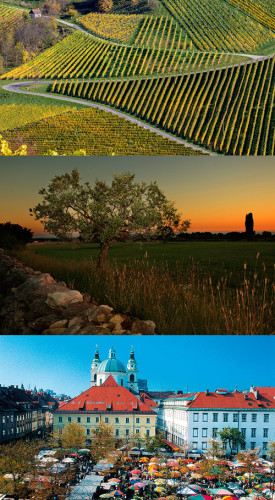 Austrian Hungarian Lands: Vienna, the Adriatic, the Alps and Prague
Austrian Hungarian Lands: Vienna, the Adriatic, the Alps and Prague
And then comes a milestone for us. After several private group journeys in Europe, here we are with our first scheduled European journey you can join in spring or autumn 2017.
If you would like to
· spoil yourself with beautiful hotels,
· eat fine meals (not always Michelin star, but the best these regions have to offer the way “mom used to cook it”),
· drive on some of the world most beautiful roads and
· immerse yourself in the landscapes and cultures of Austria, Slovenia, Croatia and the Czech Republic, there is no better journey in the world.
Travel Inspirations for the coming months…
From now until February, here are some border-crossing journey ideas for you:
-
A Burma Journey: From the Golden Triangle to the Bay of Bengal
-
Drive on back roads through this country that was frozen in time but is now undergoing rapid change…
-
November 9 and February 12
-
-
Asian Border Lands
-
Drive from Yunnan via Lao to northern Vietnam…and experience a region rich in different minority cultures…
-
November 4
-
-
A Christmas Treat: From Shangri-La to the Lanna Kingdom
-
Our flagship Asian journey from the edge of Tibet to Chiang Mai in northern Thailand is even better at Christmas and New Year.
-
It is beautiful as a family adventure, too, a journey that will be unforgettable for you and your children
-
December 22
-
All the best from On the Road Experiences for the lovely month of September!
Posted on 30 Aug, 2016
I have been working for On the Road Experiences since 2013. I started as a host…
What does a “host” do? As a journey host I oversee the whole journey from greeting guests on the first day until we all say goodbye on the last. I am responsible the service we provide and for the experiences guests enjoy; our aim is to make each journey enjoyable for all parties involved.
My role has grown over the years, and now I enjoy researching new itineraries, enhancing our existing journeys, and meeting guests before they join a trip and developing the German market. Peter gives my colleagues and I the chance to grow – sometimes it seems that every day I find myself with a new project, which makes me busy and happy!
Looking back at all the journeys I have hosted, I remember a lot of laughter and happiness, and my hard-drive is full of pictures of sunsets, beautiful landscapes and people. Two things that I can’t capture on film, though, are the hard work and long days that go into making each journey a success.
Explaining my job to friends isn’t easy, because it is not at all like being on holiday, and neither is it “just” being a tour guide. We have to work with the fact that on each journey there will be many unforeseen events along the way – hopefully these will be fun things, such as yaks on the road or coming across a colorful local festival, but they might include road closures or even landslides.
In March, for example, we got held up by market day in a small village on the way to Puzhehei, where all the roads were gridlocked with trucks both big and small.
Nobody could move until the stallholders began to clear up two to three hours later. Thinking of it now, the pictures it brings to my mind are of our guests sitting on the side of the road, relaxing – one smoking a cigar, and chatting with the market-goers.
Our drivers got stuck in, handling and coordinating the traffic while the policemen lolled about drunk on the pavement! I love that our guests and my colleagues managed to make the most out the afternoon and still find something good in a situation that wasn’t so good. It was very hot that day. As I tried to get cold drinks to keep us all refreshed, I ended up going from shop to shop as I discovered that none of the fridges were working! Finally, in a tiny shop I found cold beverages and local snacks, which I took back for us all to share.
This kind of experience is a good reminder for everyday life – of course I had all sorts of worries going through my mind: “What if we’re stuck here forever? “How long will this traffic jam last?” “What are our customers thinking?” “Will it get dark before we arrive?” “Are there any short cuts we could use?”, and so on and on… And I wished that we might have had a smoother journey on that day, but the reality is that life doesn’t always go to plan, and sometimes you just have to make the best most out of whatever happens!
Curiously, almost without fail, it is the unforeseen events, well handled, that our guests remember the most after we return home. Sometimes it’s the bends in the road that are the most memorable and meaningful!
Posted on 25 Aug, 2016
Early each morning, monks file out from the wats that line Luang Prabang’s loose grid of streets. Clasping their alms bowls, they walk, solemn and barefoot, along streets fringed with shaggy toddy palms, and past candy-coloured colonial villas and gilded temples.
Temperatures climb throughout the day, and most people retreat to the shade to sip cooling drinks and doze before venturing out again at dusk, when a vibrant night market sets up on Sisavangvong Road. Here, stallholders sell souvenirs and shake out bright silk scarves under bluish fluorescent lights as the sun sinks behind far bank of the Mekong.
As you leave Luang Prabang and set out on the road to the Chinese border, the drive punctuated by roadside villages thronging with children, any change seems faint. Three hundred kilometres away, Luang Namtha is clearly cut from the same languid, tropical cloth. Even just across the Chinese border in Xishuangbanna, people believe the same form of Buddhism, practice the same rituals, share the same traditional dress and enjoy very similar spicy-sour flavours in their food.
From Xishuangbanna, where the route of our journey Lands of Silk and Snow briefly reunites with the Mekong, the road climbs up out of the steamy basin where elephants and peacocks once strutted through the jungle, and onto the Yunnan-Guizhou Plateau. As you ascend, the air temperature drops and dries, and the vegetation changes; rubber trees and banana plantations fall away to be replaced by temperate forest and – as we approach Kunming, “the City of Eternal Spring” – fields of flowers.
North of Kunming, the pace of change picks up as you continue to climb up, past Dali and Lijiang to Shangri-La, the threshold of Tibet. From here to Lhasa our route takes us from the dramatic valleys that mark the Tibetan Plateau’s eastern fringe, crossing the Mekong again – and the Yangtze and the Salween – climbing over snow-dusted passes and swooping down through thickly forested valleys before spilling out into the broad Kyi-Chu valley on the final approach to Lhasa.
It is only by travelling overland that you can see how one land merges into the next; how the continuity of the tropics suddenly disappears as one ascends the 1500 metres between Jinghong and Kunming; how the long parallel valleys that run through northwestern Yunnan have given rise to dozens of ethnic groups and amazing biodiversity; and how Tibetan culture has overcome quite awesome geographical challenges in order to spread from Yunnan to the edge of Central Asia.
And yet while there’s change, there are also elements that bind the entire route together. From Laos to Lhasa the main religion is Buddhism – albeit of different schools. Everywhere between Dali and Luang Prabang was once part of a single kingdom in the eighth century. And the waters of the Mekong gather our journey together at several points, like a purse-string, as we travel from South-East Asia, where its waters flow, brown and stately, up to the heights of Tibet where the young river tumbles wildly out of the hills.
Pity the poor traveller who flies over all this! In our busy times of direct flights and high-speed trains, it truly is a luxury to experience a long-distance overland journey, and to see a portion of the earth’s surface up close and personal, and to meet people along your route, at every turn learning that for all that separates us, there is as much that binds us together.
Posted on 21 Aug, 2016
(For parts 1 and 2 of this 3-part series, please see “A holiday? Not exactly…” and “Impatient to run free…“)
“What do you really mean by a ‘Hidden Gem’?” people often ask me. Everyone intuitively knows what we mean, but it’s tricky to put it into words. When I try to describe my idea of a hidden gem, I say that it’s a well-kept secret, found in the most unexpected location at the most unexpected of times.
Still, that’s the kind of answer that, if it came from a politician, might make you roll your eyes and say to yourself “That’s why I hate politicians,” because it feels calculated and inauthentic. And so, often, I end up answering “I know one when I see one.” While this is still unhelpful, at least it has the merit of being completely true.
Whenever we’re researching a new itinerary, the quest is really to uncover hidden gems. From the moment I type a query into Google or e-mail a friend for suggestions to the day I finally program the address of one of my potential gems into the GPS, I am filled with anticipation that we might, perhaps, have found another one.
Back on June 23 this year, when I looked at my map of Slovenia the restaurant on our “to-do” list for the day, Majerija, looked like it was right off the highway. Thinking of greasy fast food at charmless service stations, I was almost put off visiting it. Would it be worth our while visiting it? That the restaurant is located in a village called “Slap” did little to assuage my worries.
From Lipica we turned north toward Ljubljana, before turning onto the highway to Trieste. After ascending a gentle pass, the modern highway swoops across elevated bridges and through brightly-lit tunnels into the Vipava valley, one of Slovenia’s wine-growing regions. Descending to near sea level, the temperature had risen to 35 degrees by the time we exited the highway. By this time one thing had become clear: wherever and whatever Majerija was, it wasn’t in a service station.
The road to Slap was so small that I missed the turn-off and had to do a U-turn to get back on course. Once on this little road, we saw a tiny village ahead, its diminutive skyline dominated by a church steeple. The road led through meadows, the air alive with the sound of cicadas and birds. Even though we were no more than two minutes from the expressway, it could not have felt further away. Both Pei Fen and I felt that as we drove we were not only slipping away from modern busy-ness, but also back in time.
Slap’s red, brick houses are situated on a gentle slope, and the village looks neat but still organic. Just 427 Slappers live in here. As we approached, I was filled with a mixture of apprehension and hope. It seemed highly unlikely that a restaurant worth a forty-five-minute drive could be here, in such rustic surroundings.
We drove past the church of St. Matthew and before we knew it the village was in our rear-view mirrors, and still the road kept rising and winding its way through the countryside as the road gradually narrowed futher. According to the GPS we had just another 200 meters to go to Majerija. We rounded one final corner and turned into a farmstead: if ever I’ve seen a “hidden gem” of a restaurant, this had to be it.
Majerija exists and is what it is because the owners, Matej and his wife, love what they do and because they are who they are: no attempt is made to convince others to like what they like; instead, they welcome those who, by word of mouth, love what they love.
Majerija is a collection of four 18th century buildings that were and are one home. Dark wood-framed windows, decorated with bright red geraniums, contrast against white stone walls. The buildings are surrounded by vineyards, trees and verdant undergrowth, and festooned by tangles of roses. On the day of our visit, the deep blue sky completed the image of a home completely in tune with the environment that surrounds it.
A curved walkway leads to the entrance of the restaurant. As we turned the corner we see a few wooden table with white tablecloths, crystal glasses and gleaming silverware set in the shade by the side of the house. Shortly after we sat down, Matej emerged from inside the house and handed us his menu. I knew we should order – we had so much to do in the afternoon – but I put down the menu, closed my eyes and felt that I wanted to stay there for the rest of the day.
Eventually I picked up the menu again and ordered: “Boletus pate with wild fennel flower topping and crostini”, “Roasted shank of suckling pig and traditional autumn vegetables” and “Chestnut pave, homemade vanilla ice cream and cinnamon foam”, each one a feast for my eyes and my palate.
We spent one-and-a-half hours in the hands of Matej and the lap of Majerjia, a blink of an eye, it seemed – far too short in any event. When we took our leave it was with great anticipation of the time, in September, when we can share this experience with guests because, in the end, no words can do it justice.
*************
This post concludes a series of three posts about a single day on our latest research trip, June 23. A mad day of research? Yes, certainly. A typical day on the road when we’re putting together a new itinerary? Yup! But above all, an unforgettable day!
Interested in our new itinerary? Please see here the Journey Dossier for Austrian-Hungarian Lands I: Vienna, the Adriatic, the Alps and Prague (12, 10 or 8 Days)
Posted on 19 Aug, 2016
(For part 1 of this 3-part series, please see “A holiday? Not exactly…”; for part 3, please see “I know one when I see one“.)
Ever since I was a small boy, I’ve known of the Lipizzaner stallions, the elegant grey-spotted horses that grace the performances of Vienna’s Spanish Riding School. Perhaps because I spent three teenage years horseback riding, or maybe because I’m more interested in the future than the past, I’ve always remembered Vienna more for these horses than for its historical palaces and art.
Those of you that know of the Spanish Riding School will be familiar with the ritual formality and theatrical perfection of the School’s dressage, where the horses seem to float above the ground as they move through their routine. As a demonstration of man’s control over nature it’s impressive, but entirely contrived – not that that makes it any less beautiful.
I never knew the Lipizzaner’s history or provenance, so it came as a surprise when I saw “Lipica” on Google Maps, near Slovenia’s border with Italy, and realised that the town’s Italian name was Lipizza – hence the horse breed’s name. Since we started researching our European journeys I had wanted to visit. We had run out of time twice before, but I resolved that this time would be different!
At Sezana we left the highway that leads to Trieste, in Italy. The GPS said we still had seven kilometers to go on the lovely meadow-lined road that leads south from Sezana. The day had started overcast, but by now we were blessed with a blue-skied mid-summer morning, the sun glinting through the trees as we drove. A signpost led us toward the Lipica Stud Farm down a narrower road, with white picket fences and linden trees lining it on both sides. The air seemed soft and gently fragranced. Almost involuntarily, we slowed down to enjoy the pleasure of entering this equine paradise.
Presently, we arrived at the entrance gate. While we couldn’t see many people, it was clear that at times the stud farm draws large crowds of visitors. We were shown around by two guides. The first, Victoria, welcomed us to view the horses’ morning dressage training, and then took us to the stables where the stallions are kept, all the while answering our questions with humour and authority. Second, her colleague, Vid, gave us a glimpse of the network of paths used by Lippizan-drawn carriages to access the farm’s ten square kilometres. Finally, we explored the farm’s museum and historic stables. Victoria and Vid were so infectiously enthusiastic about their work that Pei Fen and I found ourselves falling in love with the farm and horses too.
“Next time, when you bring your guests, be sure to arrive well before 10 in the morning,” Vid told us. “Why is that?” we asked. “Because there is a spectacle you won’t want to miss…” Vid went on to explain that each morning, the mares are sent out to graze at 10am. Vid’s animated description conjured up images of a herd of elegant Lipizzan mares stamping their feet, impatient to run free. The gates of their stables open. They gallop away and the earth shakes. A dust cloud rises goes up, and twirling, subsides. Then silence, except for the rustling of the linden leaves in the gentle breeze. At least, this is how I imagine it to be – the first time I see this sight will be with our guests later this summer
Eventually we had to leave for an appointment at a restaurant in the nearby Vipava valley. We drove slowly to the exit of the stud farm’s grounds, trying to linger as long as possible in this corner of Slovenia. After the past couple of hours, anything – even a restaurant that two of our Slovenian friends said “you absolutely must try” – would surely be a letdown?
And with that thought I put the address of Majerija into our GPS.
Interested in our new itinerary? Please see here the Journey Dossier for Austrian-Hungarian Lands I: Vienna, the Adriatic, the Alps and Prague (12, 10 or 8 Days)



